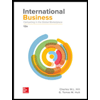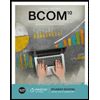DAT 260 22
.docx
keyboard_arrow_up
School
Southern New Hampshire University *
*We aren’t endorsed by this school
Course
210
Subject
Business
Date
May 27, 2024
Type
docx
Pages
2
Uploaded by ConstablePanther4343
DAT 260 Module Two Assignment Template
SWOT Analysis Worksheet: Moving Your Organization to the Cloud Strengths
Weaknesses
Scalability:
The public cloud offers scalable resources, allowing the organization to easily increase or decrease storage and computing power based on current needs.
Cost
Efficiency:
Utilizing a public cloud infrastructure can reduce the costs associated with maintaining and upgrading on-
premises hardware.
Accessibility
:
Cloud-based systems enable healthcare professionals to access patient data and applications from anywhere, enhancing remote work capabilities and patient care.
Disaster
Recovery:
Public cloud providers offer robust disaster recovery solutions, ensuring that data can be quickly restored in the event of a disaster.
Data Security Concerns:
Storing sensitive patient data in the
cloud may raise concerns about data breaches and unauthorized access.
Compliance
Issues:
Ensuring compliance with healthcare regulations such as HIPAA can be challenging when data is hosted by a third-party cloud provider.
Latency
:
Depending on the internet connectivity, there may be latency issues affecting the performance of cloud-based applications.
Dependency
on Internet:
Reliance on internet connectivity can be a drawback, as any disruption in internet service can affect access to critical data and applications.
Opportunities
Threats
Advanced
Analytics:
The cloud provides powerful tools for data analytics, enabling the organization to gain insights from large datasets that were previously difficult to manage.
Improved
Collaboration:
Cloud infrastructure facilitates better collaboration among healthcare professionals by providing a shared platform for data and communication tools.
Telemedicine
Expansion:
Moving to the cloud supports the expansion of telemedicine services, allowing the organization to reach more patients remotely.
Innovation
:
The cloud environment supports the integration of new technologies such as artificial intelligence and machine learning, enhancing patient care and operational efficiency.
Cybersecurity Risks:
The cloud environment may attract cyber threats, including hacking and ransomware attacks, which can compromise patient data.
Vendor
Lock-In:
Relying on a specific cloud provider may lead to vendor lock-in, making it difficult and costly to switch providers in the future.
Data
Privacy Concerns:
Patients and stakeholders may have concerns about the privacy and confidentiality of their data when
stored in the cloud.
Regulatory
Changes:
Any changes in healthcare regulations could impact how data is managed and stored in the cloud, requiring continuous monitoring and adaptation.
Your preview ends here
Eager to read complete document? Join bartleby learn and gain access to the full version
- Access to all documents
- Unlimited textbook solutions
- 24/7 expert homework help
Related Questions
Required information
[The following information applies to the questions displayed below.]
The Air Force Museum Foundation has commissioned the purchase of 16 Four F Sixes, pre-World War II aircraft. They will
be built completely from scratch to the exact specifications used for the originals. As further authentication, the aircraft will
be made using the technology and manufacturing processes available when the originals were built. Each of the 16
airplanes will be flown to Air Force and aviation museums throughout the country for exhibition. Aviation enthusiasts can
also visit the production facility to see exactly how such aircraft were built in 1938.
Soren Industries wants to bid on the aircraft contract and asked for and received certain cost information about the Four F
Sixes from the Air Force. The information includes some of the old cost data from the builders of the original aircraft. The
available information is for the total accumulated time as the 1st, 8th, and 32nd…
arrow_forward
Which 4 methods allow clients to process digital payments from customers using QuickBooks Online Payments?(Select all that apply)
A. Running a card through a card reader attached to a mobile device
B. Entering payments manually as a Receive Payment
C. Taking client payment via cryptocurrency
D. Entering payments manually as a Sales Receipt
E. Entering payments manually as a Credit Memo
F. Sending a Sales Receipt to a customer via email
G.Taking client payment via the Pay Now button on an emailed Invoice
arrow_forward
Home Page - JagApp
Week 13 - Homework #8 (100 points) i
10
1
points
eBook
Print
☑
Oli
M Question 1 - Week 13 - Homework #8 (100 points) - Connect
ezto.mheducation.com
Saved
b Success Confirmation of Question Submission | bartleby
The following account balances appear in the 2024... | Chegg.com
Help
Save & Exit
Submit
The following account balances appear in the 2024 adjusted trial balance of Beavers Corporation: Service Revenue, $275,000;
Salaries Expense, $110,000; Supplies Expense, $20,000; Rent Expense, $26,000; Advertising Expense, $44,000; and Delivery
Expense, $18,000.
Prepare an income statement for the year ended December 31, 2024.
Expenses:
References
Mc
Graw
Hill
BEAVERS CORPORATION
Income Statement
For the year ended December 31, 2024
Total expenses
Check my work
arrow_forward
Home Page - JagApp
Week 13 - Homework #8 (100 points) i
×
110
M Question 3 - Week 13 - Homework #8 (100 points) - Connect
ezto.mheducation.com
Saved
b Success Confirmation of Question Submission | bartleby
Please show work/give explanation | Chegg.com
Help
Save & Exit
Submit
3
10
points
The following account balances appear in the 2024 adjusted trial balance of Blue Devils Corporation: Cash, $5,000; Accounts
Receivable, $9,000; Supplies, $19,000; Land, $75,000; Accounts Payable, $26,000; Salaries Payable, $16,000; Common Stock,
$60,000; and Retained Earnings,
Prepare the December 31, 2024, classified balance sheet including the correct balance for retained earnings.
eBook
Assets
Print
Current assets:
References
Mc
Graw
Hill
BLUE DEVILS CORPORATION
Balance Sheet
December 31, 2024
Liabilities
Current liabilities:
Total current assets
Long-term assets:
Total current liabilities
Stockholders' Equity
Total assets
Total stockholders' equity
Total liabilities and stockholders' equity
Check…
arrow_forward
DFD of proposed solution
USER
Request Form
[Type input]
Find Lease
Document Problem
Submit Request
[Lease Store]
Common Problems Store]
[Request Store]
Phone
Camera
arrow_forward
Many medical specialties have professional societies that offer degrees of membership where the more advanced members are designated as "fellows" (regardless of gender). For example an internal medicine physician can be designated as a Fellow of the American College of Physicians based on standards for experience, education and service. These fellows are entitled to add the letters "FACP" after their name and degree. What function from this chapter is accomplished by this tiered level of membership? A. Signaling physician quality B. Linking the physician to a mechanism for patients to record complaints (like the Better Business Bureau provides) C. Reducing information asymmetries D. Fellowship designations are a marketing strategy to attract new patients Give the answers with detail explanation
arrow_forward
AA
6:52
boards.greenhouse.io
help from any third party.
1.(Scenario Based Question - Customer) Your response
to Nazia's in-app chat message 'Hiya! My partner has
sent me £1500 from their bank account as a Faster
Payment to cover my bills and living expenses this
month. They've told me they sent it over an hour ago
from their bank and it left their balance, so I kind of
expected it by now. I'm going to struggle to pay my bills
without this, Thank you!
Write your response to the customer as if you were a
COp at Monzo who had just picked up a call from
Nazia, for example "Hi Nazia..". Show us your empathy
and analytical problem solving skills, and how by being
customer centric you'd help get the customer to a
logical solution in this scenario.
★
2. (Scenario Based Question - Customer) Your
Privacy - Terms
rosponco to Barbara's in onn chat mossago "Hello love
arrow_forward
1. Because most developers are not clinicians and most clinicians are not developers, what measures are necessary to ensure the development of an effective healthcare information system?
2. Order the following types of healthcare information systems from most important to least important to a healthcare organization and discuss why you chose this order. Provide one outside source (other than the textbook) to support your answer.
a. Clinical information
b. Operational management
c. Strategic decision support
d. Electronic networking and e-health applications
3. If you were a leader in a healthcare organization, which of the future challenges for healthcare information systems would you be most concerned about and why. How would you prepare your organization for this future challenge? Provide one outside source
arrow_forward
Answer number 2 only. Full solution. Unique answers only.
arrow_forward
Management Information Systems
arrow_forward
Management Information Systems
arrow_forward
Ch 8 Homework Assignment
Saved
7
Problem 8-9 Buying versus Leasing a Motor Vehicle [LO8-2]
Purchase Costs
2.5
Down payment
points
Loan payment
eBook
Hint
Estimated value at end of loan
Opportunity cost interest rate
Leasing Costs
Security deposit
Lease payment
$ 2,150
$ 850 for 36 months
$ 6,300
3 percent
$730 for 36 months
$ 890
$ 1,100
Ask
End of lease charges
Print
References
Based on the costs listed in the table above, calculate the costs of buying and of leasing a
Note: Round your answers to the nearest whole number.
Buying and Leasing
Total purchase cost
Total leasing cost
arrow_forward
Explain about the background of information system. (With References)
arrow_forward
Housing and property services category is one of the e-government service preferences, which contains all of the examples except:
Select one:
a. Affordable housing information services
b. donation services
c. utility information
d. construction permit services
arrow_forward
A recent increase in unpaid patient account balances has identified the need to implement efficient financial policies. Dr. Jones asked Lucy to create an operational plan to increase patient collections this should include developing a payment policy for patients to review, acknowledge, and sign the goal is to reduce unpaid accountsand define potential collection actions use the following prompts to create your discussion thread post. Identify a policy Lucy could develop to reduce unpaid balances and explain your answer describe two ways Lucy could communicate the implementation of this policy to her billing department and consider how she might engage them in acting on patient accounts that are over 30 days past due, discuss how the convenience of offering online payments could increase patient revenue.
arrow_forward
Please help
arrow_forward
(b)
Upon graduation, eager to join the work force you sent many resumes to
companies that you want to join. And you received a call for an interview
from one of the companies you applied for. This company's business is
heavily on brick and mortar whereby their products are being traded
physically in a shop. You were happy to receive this invitation and you
accepted their call to attend the interview. During the interview session, one of
the managers asked your opinion about several queries. The queries are as
below. As an interviewee how you manage to answer them in a professional
manner will help you secure the job. The context and depth of your discussion
will be added advantage as it will portray your knowledge and understanding
of their needs.
arrow_forward
eBook
Problem 8-25 (Algorithmic)
Georgia Cabinets manufactures kitchen cabinets that are sold to local dealers throughout the Southeast. Because of a large backlog of orders for oak and cherry cabinets, the company decided to contract with three smaller cabinetmakers to do the final finishing operation.
For the three cabinetmakers, the number of hours required to complete all the oak cabinets, the number of hours required to complete all the cherry cabinets, the number of hours available for the final finishing operation, and the cost per hour to perform the work are
shown here:
1
Hours required to complete all the oak cabinets
Hours required to complete all the cherry cabinets
Hours available
Cost per hour
C₁
Cabinetmaker 1 Cabinetmaker 2 Cabinetmaker 3
50
61
35
$36
proportion of Oak cabinets assigned to cabinetmaker 1
proportion of Oak cabinets assigned to cabinetmaker 2
proportion of Oak cabinets assigned to cabinetmaker 3
proportion of Cherry cabinets assigned to cabinetmaker 1
C2…
arrow_forward
a
b
When using the Daily Business Manager, you cannot do which of the following:
a
C
b
d
с
d
Show Transcribed Text
a
b
с
Record notes (messages) to help you remember tasks to be completed.
HST is charged to a customer when:
Advance the session date for recording transactions.
List recurring invoices for the next 7 days.
Change the setting to not display this manager window.
d
Show Transcribed Text
S
The customer will be reselling the goods to another customer.
The customer will be using the goods for their own use.
When the red stick pin is clicked in a Sales Journal window, Sold to: area, it means that:
The customer has prepaid the order and will pick up the goods in 10 days.
a and b are correct.
a Graphs.
This is an invoice for a
arrow_forward
Manage Your Health, Inc. (MYH) is a Fortune 500 company that provides a variety
of healthcare services across the globe. MYH has more than 20,000 full-time
employees and more than 5,000 part-time employees. MYH recently updated its
strategic plan; key goals include reducing internal costs, increasing cross-selling of
products, and exploiting new Web-based technologies to help employees,
customers, and suppliers work together to improve the development and delivery
of healthcare products and services. Below are some ideas the IT department has
developed for supporting these strategic goals:
1. Recreation and Wellness Intranet Project: Provide an application on
the current intranet to help employees improve their health. A recent study
found that MYH, Inc. pays 20 percent more than the industry average for
employee healthcare premiums, primarily due to the poor health of its
employees. You believe that this application will help improve employee
health within one year of its rollout so…
arrow_forward
eBook
Problem 7-49 (Algorithmic)
PharmaPlus operates a chain of 30 pharmacies. The pharmacies are staffed by licensed pharmacists and pharmacy technicians. The company currently employs 90 full-time-equivalent pharmacists (combination of full time and part time) and 175 full-time-equivalent
technicians. Each spring management reviews current staffing levels and makes hiring plans for the year. A recent forecast of the prescription load for the next year shows that at least 300 full-time-equivalent employees (pharmacists and technicians) will be required to staff
the pharmacies. The personnel department expects 10 pharmacists and 30 technicians to leave over the next year. To accommodate the expected attrition and prepare for future growth, management states that at least 15 new pharmacists must be hired. In addition,
PharmaPlus's new service quality guidelines specify no more than two technicians per licensed pharmacist. The average salary for licensed pharmacists is $50 per hour and…
arrow_forward
18
Partial online offers refer to services that cannot be completed without at least one offline step.
Select one:
a. True
b. False
arrow_forward
13.
Enterprise Risk Management (ERM) is designed to achieve which of the following four categories of objectives, except
Group of answer choices
None of the choices
Strategic, Reporting, Operations, Compliance
Operations, Reporting, Compliance, Strategic
Strategic, Operations, Reporting, Compliance
Reporting, Compliance, Strategic, Operations
arrow_forward
The following Figure: Illustration of business intelligence original objective as a focus area and the resulting actual implementations
Distinguish business intelligence from business analytics regarding the focus of the eight
analytical steps. [500 Words add References]
arrow_forward
QUESITON 13
Customer relationship management system enable organisations to
A.be more focused on product development
B.be more productive
C.provide more personalised service
D.become demand driven rather than supplier driven
Question 14
When considering decision making under uncertainty - MAXIMAX is viewed as
A.having the least possible loss
B.None of the answers presented
C.the alternative that maximizes the minimum outcome for every alternative
D.the alternative with the highest average outcome
arrow_forward
SEE MORE QUESTIONS
Recommended textbooks for you

BUSN 11 Introduction to Business Student Edition
Business
ISBN:9781337407137
Author:Kelly
Publisher:Cengage Learning

Essentials of Business Communication (MindTap Cou...
Business
ISBN:9781337386494
Author:Mary Ellen Guffey, Dana Loewy
Publisher:Cengage Learning

Accounting Information Systems (14th Edition)
Business
ISBN:9780134474021
Author:Marshall B. Romney, Paul J. Steinbart
Publisher:PEARSON


International Business: Competing in the Global M...
Business
ISBN:9781259929441
Author:Charles W. L. Hill Dr, G. Tomas M. Hult
Publisher:McGraw-Hill Education

Related Questions
- Required information [The following information applies to the questions displayed below.] The Air Force Museum Foundation has commissioned the purchase of 16 Four F Sixes, pre-World War II aircraft. They will be built completely from scratch to the exact specifications used for the originals. As further authentication, the aircraft will be made using the technology and manufacturing processes available when the originals were built. Each of the 16 airplanes will be flown to Air Force and aviation museums throughout the country for exhibition. Aviation enthusiasts can also visit the production facility to see exactly how such aircraft were built in 1938. Soren Industries wants to bid on the aircraft contract and asked for and received certain cost information about the Four F Sixes from the Air Force. The information includes some of the old cost data from the builders of the original aircraft. The available information is for the total accumulated time as the 1st, 8th, and 32nd…arrow_forwardWhich 4 methods allow clients to process digital payments from customers using QuickBooks Online Payments?(Select all that apply) A. Running a card through a card reader attached to a mobile device B. Entering payments manually as a Receive Payment C. Taking client payment via cryptocurrency D. Entering payments manually as a Sales Receipt E. Entering payments manually as a Credit Memo F. Sending a Sales Receipt to a customer via email G.Taking client payment via the Pay Now button on an emailed Invoicearrow_forwardHome Page - JagApp Week 13 - Homework #8 (100 points) i 10 1 points eBook Print ☑ Oli M Question 1 - Week 13 - Homework #8 (100 points) - Connect ezto.mheducation.com Saved b Success Confirmation of Question Submission | bartleby The following account balances appear in the 2024... | Chegg.com Help Save & Exit Submit The following account balances appear in the 2024 adjusted trial balance of Beavers Corporation: Service Revenue, $275,000; Salaries Expense, $110,000; Supplies Expense, $20,000; Rent Expense, $26,000; Advertising Expense, $44,000; and Delivery Expense, $18,000. Prepare an income statement for the year ended December 31, 2024. Expenses: References Mc Graw Hill BEAVERS CORPORATION Income Statement For the year ended December 31, 2024 Total expenses Check my workarrow_forward
- Home Page - JagApp Week 13 - Homework #8 (100 points) i × 110 M Question 3 - Week 13 - Homework #8 (100 points) - Connect ezto.mheducation.com Saved b Success Confirmation of Question Submission | bartleby Please show work/give explanation | Chegg.com Help Save & Exit Submit 3 10 points The following account balances appear in the 2024 adjusted trial balance of Blue Devils Corporation: Cash, $5,000; Accounts Receivable, $9,000; Supplies, $19,000; Land, $75,000; Accounts Payable, $26,000; Salaries Payable, $16,000; Common Stock, $60,000; and Retained Earnings, Prepare the December 31, 2024, classified balance sheet including the correct balance for retained earnings. eBook Assets Print Current assets: References Mc Graw Hill BLUE DEVILS CORPORATION Balance Sheet December 31, 2024 Liabilities Current liabilities: Total current assets Long-term assets: Total current liabilities Stockholders' Equity Total assets Total stockholders' equity Total liabilities and stockholders' equity Check…arrow_forwardDFD of proposed solution USER Request Form [Type input] Find Lease Document Problem Submit Request [Lease Store] Common Problems Store] [Request Store] Phone Cameraarrow_forwardMany medical specialties have professional societies that offer degrees of membership where the more advanced members are designated as "fellows" (regardless of gender). For example an internal medicine physician can be designated as a Fellow of the American College of Physicians based on standards for experience, education and service. These fellows are entitled to add the letters "FACP" after their name and degree. What function from this chapter is accomplished by this tiered level of membership? A. Signaling physician quality B. Linking the physician to a mechanism for patients to record complaints (like the Better Business Bureau provides) C. Reducing information asymmetries D. Fellowship designations are a marketing strategy to attract new patients Give the answers with detail explanationarrow_forward
- AA 6:52 boards.greenhouse.io help from any third party. 1.(Scenario Based Question - Customer) Your response to Nazia's in-app chat message 'Hiya! My partner has sent me £1500 from their bank account as a Faster Payment to cover my bills and living expenses this month. They've told me they sent it over an hour ago from their bank and it left their balance, so I kind of expected it by now. I'm going to struggle to pay my bills without this, Thank you! Write your response to the customer as if you were a COp at Monzo who had just picked up a call from Nazia, for example "Hi Nazia..". Show us your empathy and analytical problem solving skills, and how by being customer centric you'd help get the customer to a logical solution in this scenario. ★ 2. (Scenario Based Question - Customer) Your Privacy - Terms rosponco to Barbara's in onn chat mossago "Hello lovearrow_forward1. Because most developers are not clinicians and most clinicians are not developers, what measures are necessary to ensure the development of an effective healthcare information system? 2. Order the following types of healthcare information systems from most important to least important to a healthcare organization and discuss why you chose this order. Provide one outside source (other than the textbook) to support your answer. a. Clinical information b. Operational management c. Strategic decision support d. Electronic networking and e-health applications 3. If you were a leader in a healthcare organization, which of the future challenges for healthcare information systems would you be most concerned about and why. How would you prepare your organization for this future challenge? Provide one outside sourcearrow_forwardAnswer number 2 only. Full solution. Unique answers only.arrow_forward
- Management Information Systemsarrow_forwardManagement Information Systemsarrow_forwardCh 8 Homework Assignment Saved 7 Problem 8-9 Buying versus Leasing a Motor Vehicle [LO8-2] Purchase Costs 2.5 Down payment points Loan payment eBook Hint Estimated value at end of loan Opportunity cost interest rate Leasing Costs Security deposit Lease payment $ 2,150 $ 850 for 36 months $ 6,300 3 percent $730 for 36 months $ 890 $ 1,100 Ask End of lease charges Print References Based on the costs listed in the table above, calculate the costs of buying and of leasing a Note: Round your answers to the nearest whole number. Buying and Leasing Total purchase cost Total leasing costarrow_forward
arrow_back_ios
SEE MORE QUESTIONS
arrow_forward_ios
Recommended textbooks for you
 BUSN 11 Introduction to Business Student EditionBusinessISBN:9781337407137Author:KellyPublisher:Cengage Learning
BUSN 11 Introduction to Business Student EditionBusinessISBN:9781337407137Author:KellyPublisher:Cengage Learning Essentials of Business Communication (MindTap Cou...BusinessISBN:9781337386494Author:Mary Ellen Guffey, Dana LoewyPublisher:Cengage Learning
Essentials of Business Communication (MindTap Cou...BusinessISBN:9781337386494Author:Mary Ellen Guffey, Dana LoewyPublisher:Cengage Learning Accounting Information Systems (14th Edition)BusinessISBN:9780134474021Author:Marshall B. Romney, Paul J. SteinbartPublisher:PEARSON
Accounting Information Systems (14th Edition)BusinessISBN:9780134474021Author:Marshall B. Romney, Paul J. SteinbartPublisher:PEARSON
 International Business: Competing in the Global M...BusinessISBN:9781259929441Author:Charles W. L. Hill Dr, G. Tomas M. HultPublisher:McGraw-Hill Education
International Business: Competing in the Global M...BusinessISBN:9781259929441Author:Charles W. L. Hill Dr, G. Tomas M. HultPublisher:McGraw-Hill Education

BUSN 11 Introduction to Business Student Edition
Business
ISBN:9781337407137
Author:Kelly
Publisher:Cengage Learning

Essentials of Business Communication (MindTap Cou...
Business
ISBN:9781337386494
Author:Mary Ellen Guffey, Dana Loewy
Publisher:Cengage Learning

Accounting Information Systems (14th Edition)
Business
ISBN:9780134474021
Author:Marshall B. Romney, Paul J. Steinbart
Publisher:PEARSON


International Business: Competing in the Global M...
Business
ISBN:9781259929441
Author:Charles W. L. Hill Dr, G. Tomas M. Hult
Publisher:McGraw-Hill Education
